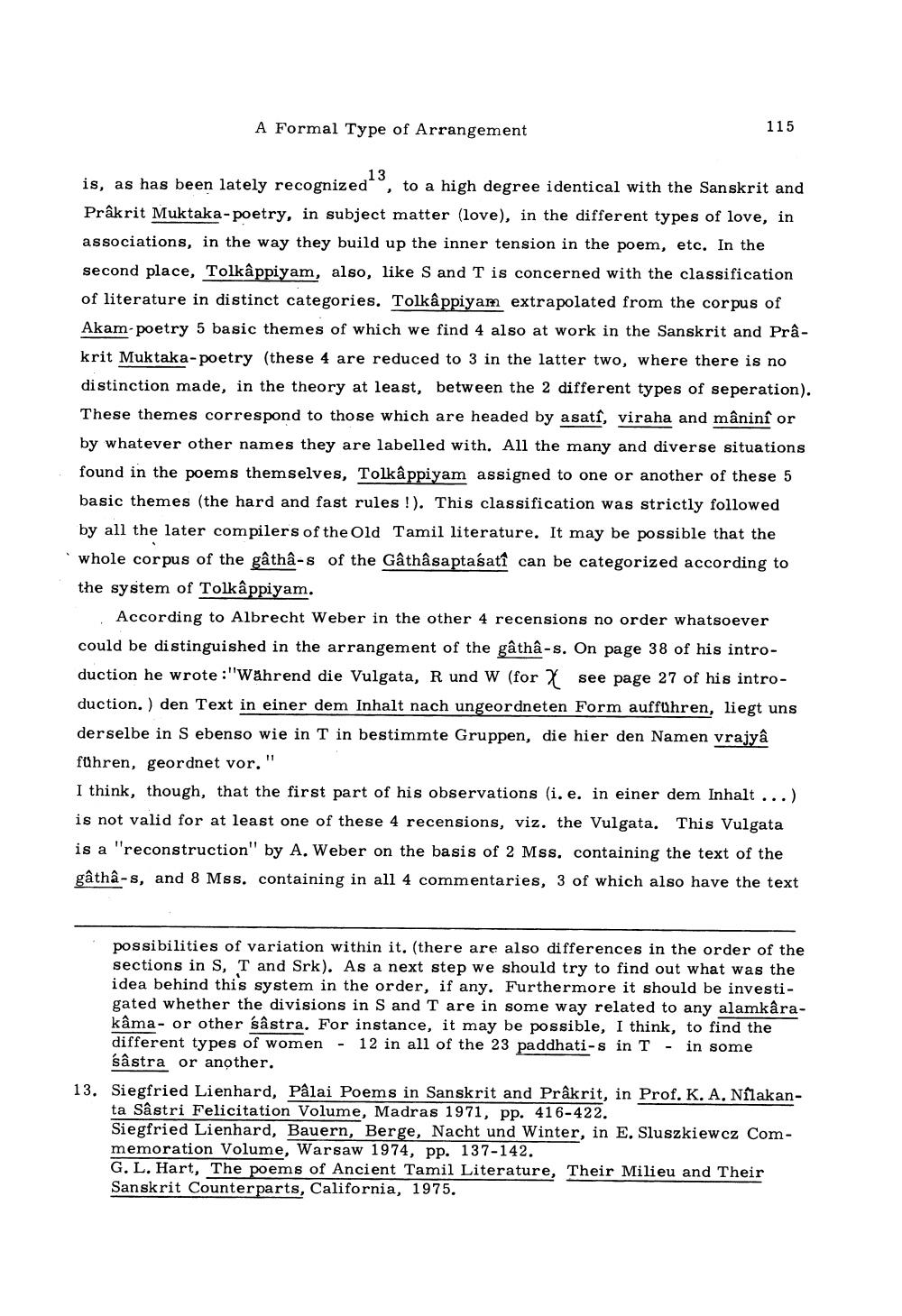Book Title: Studien Zur Indologie Und Iranistik Author(s): Gert Klingenschmitt, Albrecht Wezler, Michael Witzel Publisher: Gert Klingenschmitt, Albrecht Wezler, Michael Witzel View full book textPage 6
________________ A Formal Type of Arrangement 115 is, as has been lately recognized", to a high degree identical with the Sanskrit and Prâkrit Muktaka- poetry, in subject matter (love), in the different types of love, in associations, in the way they build up the inner tension in the poem, etc. In the second place, Tolkâppiyam, also, like S and T is concerned with the classification of literature in distinct categories. Tolkâppiyam extrapolated from the corpus of Akam-poetry 5 basic themes of which we find 4 also at work in the Sanskrit and Prâkrit Muktaka-poetry (these 4 are reduced to 3 in the latter two, where there is no distinction made, in the theory at least, between the 2 different types of seperation). These themes correspond to those which are headed by asats, viraha and mâninî or by whatever other names they are labelled with. All the many and diverse situations found in the poems themselves, Tolkâppiyam assigned to one or another of these 5 basic themes (the hard and fast rules !). This classification was strictly followed by all the later compilers of the Old Tamil literature. It may be possible that the 'whole corpus of the gâthâ-s of the Gâthâsaptasatî can be categorized according to the system of Tolkâppiyam. According to Albrecht Weber in the other 4 recensions no order whatsoever could be distinguished in the arrangement of the gâthâ-s. On page 38 of his introduction he wrote:"Während die Vulgata, R und W (for X see page 27 of his introduction.) den Text in einer dem Inhalt nach ungeordneten Form aufführen, liegt uns derselbe in S ebenso wie in T in bestimmte Gruppen, die hier den Namen vrajya führen, geordnet vor." I think, though, that the first part of his observations (i. e. in einer dem Inhalt ...) is not valid for at least one of these 4 recensions, viz. the Vulgata. This Vulgata is a "reconstruction" by A. Weber on the basis of 2 Mss. containing the text of the gâthâ-s, and 8 Mss. containing in all 4 commentaries, 3 of which also have the text possibilities of variation within it. (there are also differences in the order of the sections in S, T and Srk). As a next step we should try to find out what was the idea behind this system in the order, if any. Furthermore it should be investigated whether the divisions in S and Tare in some way related to any alamkârakâma- or other sâstra. For instance, it may be possible, I think, to find the different types of women - 12 in all of the 23 paddhati-s in T - in some śâstra or another. 13. Siegfried Lienhard, Pâlai Poems in Sanskrit and Prakrit, in Prof. K. A. Nílakan ta Sâstri Felicitation Volume, Madras 1971, pp. 416-422. Siegfried Lienhard, Bauern, Berge, Nacht und Winter, in E. Sluszkiewcz Commemoration Volume, Warsaw 1974, pp. 137-142. G. L. Hart, The poems of Ancient Tamil Literature, Their Milieu and Their Sanskrit Counterparts, California, 1975.Page Navigation
1 ... 4 5 6 7 8 9 10 11 12 13 14 15 16 17 18 19 20 21 22
